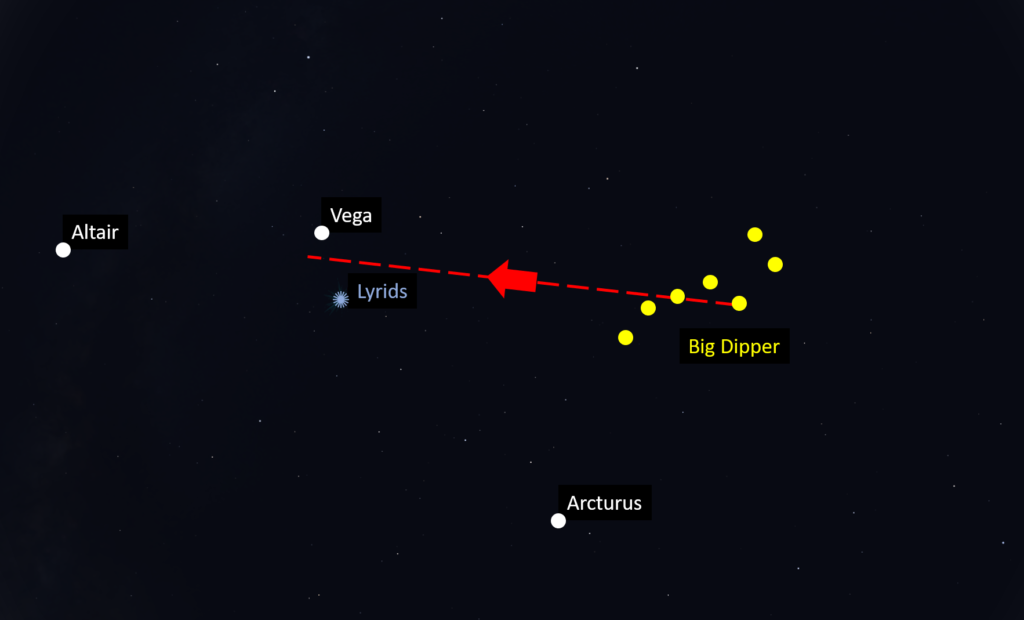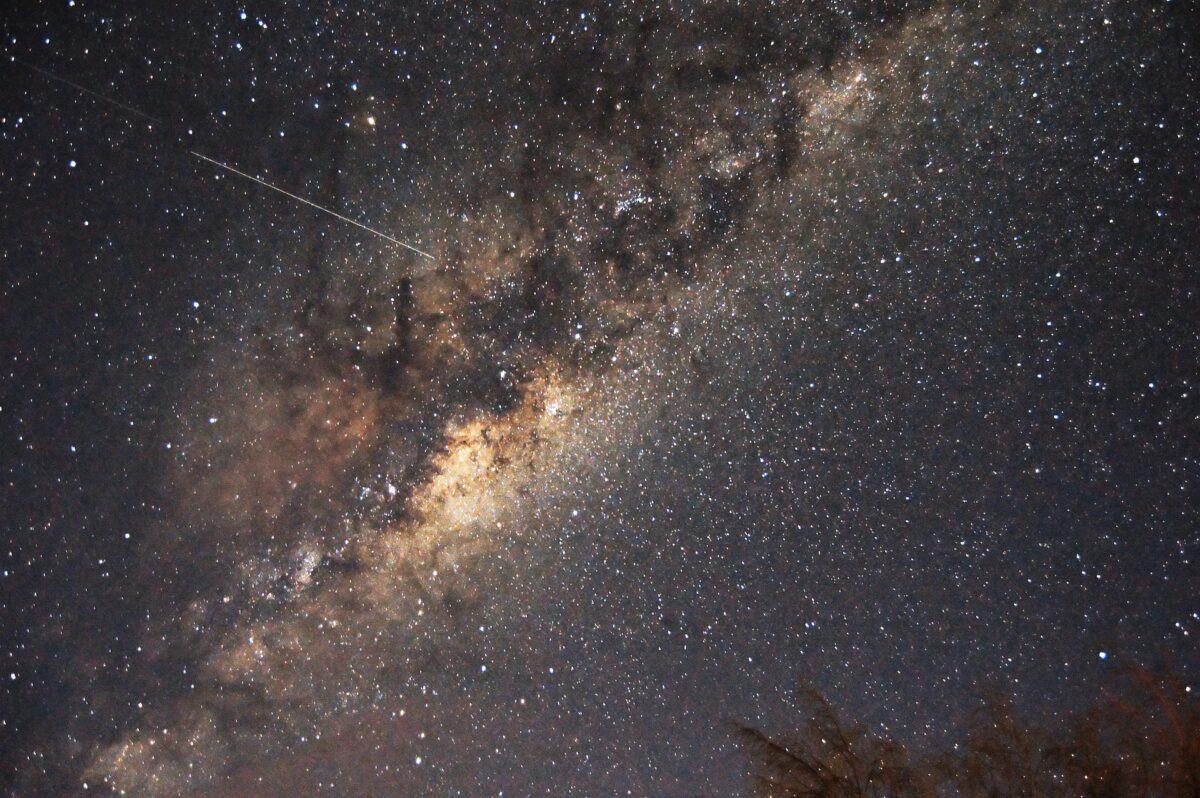Stargazers (almost) all around the world, get ready for an amazing stargazing event which starts tomorrow: the Lyrids meteor shower! Keep on reading to discover what a meteor shower is, and to find out how to see the Lyrids and other interesting facts about them! And don’t forget to prepare your wishes – maybe they will get granted, once you see the Lyrids!
What is a meteor shower?
A meteor shower on Earth usually occurs when our planet’s path intersects with the orbit of a comet. When a comet approaches the Sun, some of its ice vaporizes, leaving behind a stream of dust and debris, called a “dust trail” (which is different from a comet’s tail). When such debris – called meteoroids or micrometeoroids, in function of the size, and which is most of the time the size of a grain of sand -, enters Earth’s atmosphere at very high speeds (typically 70 km/s), it heats up because of the friction with the air in the atmosphere, which causes the particles to light up and glow. This streak of light crossing the night sky is called a meteor, or shooting star. So no, a shooting star is not a real “star” 😉
Meteors usually occur in Earth’s atmosphere at an altitude of above 50 km, and under 100 km. The glow can be fainter and shorter for smaller particles and it becomes brighter and longer as the size of the particle increases. The colour of a meteor can also vary, in function of the chemical composition of the particle!
And, by the way, a meteor that doesn’t burn up and which finally hits Earth’s surface, is called a meteorite!
The radiant
What is very interesting is the fact that the meteor particles in a meteor shower originate from a point called the radiant, and are all travelling in parallel paths.
But if we look at the sky, we see the meteors radiate in all directions. So how can this be? This is the effect of perspective! For example, if you sit in the middle of a straight railroad track and you look along it, you see that the two tracks converge at a single point, somewhere far away. This is exactly what happens with meteors in a meteor shower, but the effect is a lot more intense, due to the great distances where the meteor shower occurs!

The Lyrids
The Lyrids are a meteor shower starting on April 16 and lasting until April 26 every year. This spring, its peak will be on April 22, so make sure you go out around this date, if you’d like to see this meteor shower in all its beauty; weather permitting, of course!
To locate the radiant of the Lyrids, you will need to find the Lyra constellation in the night sky. It’s not so difficult to find it, as Vega, the brightest star of this constellation, is one of the brightest stars in the night sky, with a magnitude of around 0, thus easy to see even in light polluted areas.
One way of easily finding Vega, is by drawing an imaginary line between two stars forming the well-known Big Dipper asterism, as shown in the below image:

Extend this imaginary line in the arrow’s direction, until you reach your first (very) bright star, which will be Vega. Be sure not to extend the line too long, as you will reach another quite bright star – Altair.
However, to see the actual meteor shower, you would need to find a place away from light pollution, as the shooting stars are not as bright as Vega! Their magnitude average somewhere towards the value +2, sometimes culminating with “Lyrids Fireballs”, which is the name given to some brighter meteors of this event. In addition, the Moon may make it more difficult to see this year’s Lyrids, so, if our natural satellite is troublesome, just wait for it to set, before trying to spot the meteor shower.
Naming and predicting meteor showers
Meteor showers are named in function of the constellation where they originate. So, the Lyrids seem to originate in the constellation of Lyra, hence their name!
The source of the dust creating the Lyrids comes from the C/1861 G1 Thatcher Comet – a long-period comet (415 years).
The Lyrids is a predictable event – that is, they occur because of the crossing of Earth’s path with the orbit of the aforementioned comet, which was last visible from Earth in 1861, when it was discovered by A. E. Thatcher (and is expected to be seen again in 2283!). The intersection of Earth with this comet’s orbit occurs each year in April, thus, the Lyrids meteor shower is then expected!
Did you know?
The Lyrids are the oldest reported meteor shower – since 687 BC!

